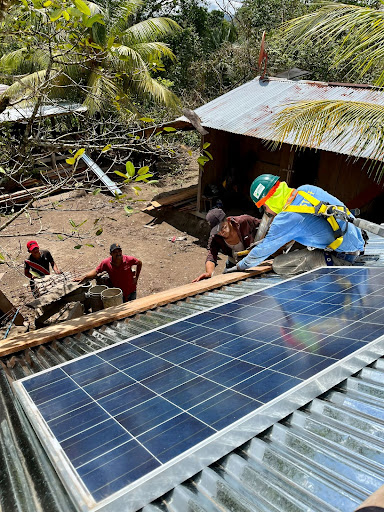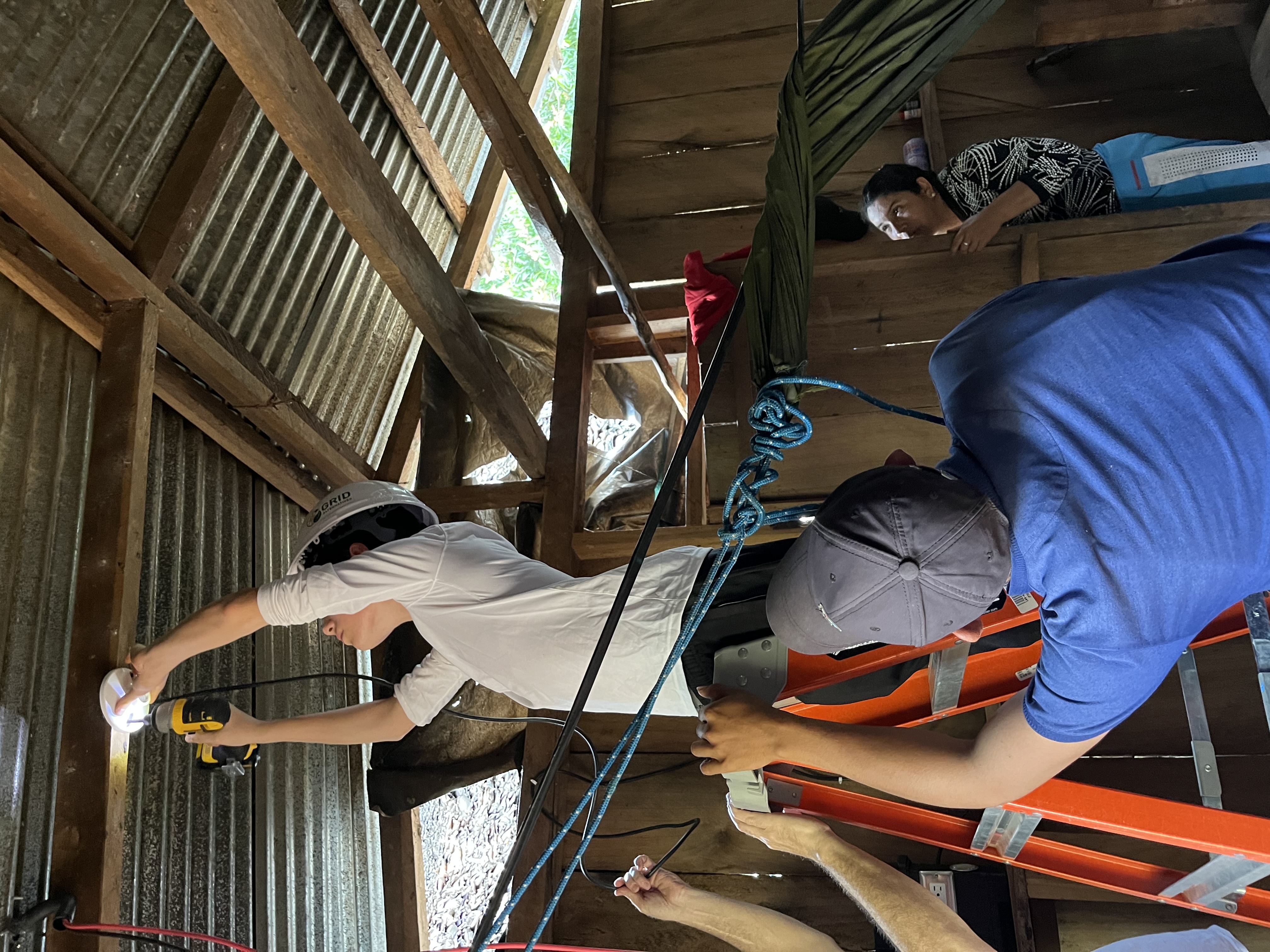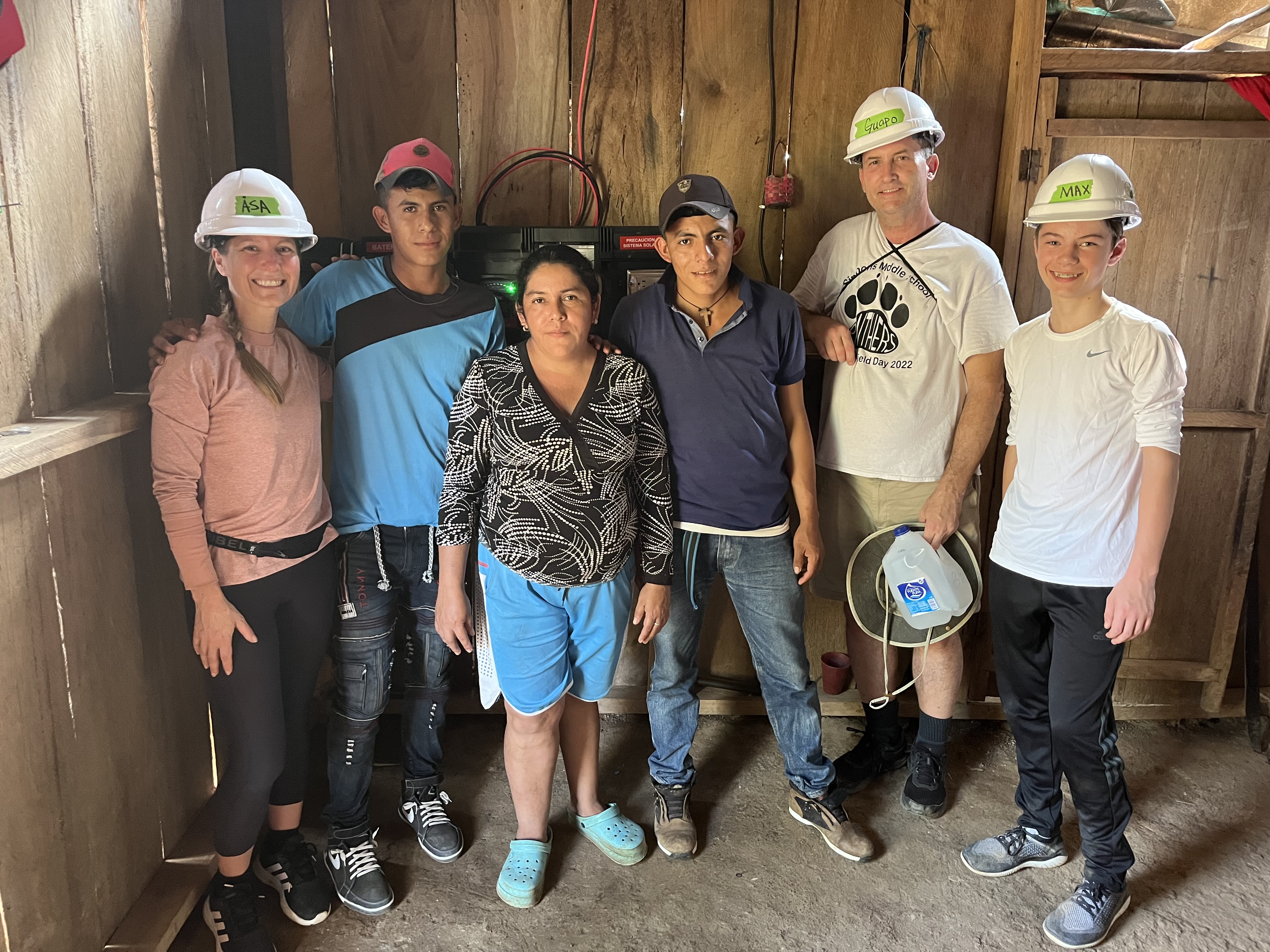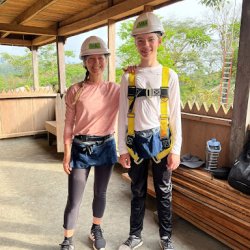Thank you to Max Rodgers, our guest writer, who participated on an international trip in March 2023 to install solar panels in a local community in Nicaragua. In this essay, he shares some of his experiences from the trip and the lasting memories, joy, and impact that he holds closely. If you are interested in traveling with GRID Alternatives on a similar trip, please visit this link to get more information on future opportunities.
Have you ever stopped to think about what your life would look like if you didn’t have access to electricity?
Electricity and everything that it enables is something I had always taken for granted, up until I traveled to Nicaragua as a volunteer with GRID Alternatives. In March 2023, I participated in a project to help install solar energy for 15 families in a rural community called San Jose El Paraíso, which does not have access to Nicaragua's electricity grid. The things I observed while I was there are unlike anything I have ever seen before. I will share some of my experiences during my time there.
About the Community:
San Jose El Paraíso is an isolated community located in the mountainous region of Matagalpa. Since there are no roads connecting the community to other inhabited areas, we were arriving on mules and horseback. It was a strenuous ride on steep and muddy hillsides, especially since we were carrying all our luggage and equipment. Thankfully, we had a lot of generous help from the community members. During our stay we would sleep on tarp beds in the community school. On our way there I noticed free grazing cows and saw some houses on hill tops and on pastures of grass. Surrounded by nature it was a beautiful place, but I was surprised how spread apart the houses of the community were.
San Jose El Paraíso is a special place in many ways. Unlike most communities, they are not on the national electricity grid, meaning most families who live here don’t have lights at night, or any appliances, computers or TV’s. Their houses are indoor-outdoor spaces with open fires to cook food in their kitchen. Chickens are free to roam in their houses. The families rely on farming as their main source of income and they care for their farm animals. This is a very different way of life from the world that we live in, where everything we need is minutes away at a store or a click away on Amazon. While our houses are full of things that we may never use, the objects owned by the people in San Jose El Paraíso are functional, used well, and cared for. Living with this community, I realized that despite having very few material possessions, they are rich in other ways. They rely on a community that works together and backs each other up. In this way, they are resilient and their community felt warm and caring.
The Work We Did in the Community:
Working together on this project were seven volunteers and five local instructors. We split up into three work teams that were responsible for installing 5 home solar systems each, adding up to solar systems for 15 families in total. To take advantage of the cool mornings, we woke up early at 5am. In the kitchen, women had already started up the fire to cook a hearty breakfast of rice, beans, chicken stew, and corn tortillas.


Since the houses of this village are very far apart, we rode on mules to work over hills and across rivers while carrying all of our working equipment. On our first working day, we were installing solar systems on two houses. I thought this sounded pretty easy, but I came to realize that it was definitely not. At each house, we installed a solar panel on the roof and worked on electrical wiring indoors to connect the panel to the rechargeable battery, which would fuel one light bulb and two electrical outlets. It was a lot to learn, and the working conditions were very challenging, especially on the metal roofs that were steep and got scorching hot in the sun.
For the first house install I worked together with our instructor Karelia on the roof. This house was a two story building, which was unusual and would be the tallest of all the houses we worked on. Don Isaias, the owner of the house, helped us set up the ladder and held it in place while Karelia and I climbed up to the top. Once we got the big solar panel and all the harnesses, screws, screwdrivers, and bolts up, we began to secure the solar panel in its place and connect it to the wires. Meanwhile, my mom, and a volunteer called Brian, and the other instructor Bruno worked on the electric box and battery inside. When both groups were finished, we connected the solar panel to the battery, attached a light console to the ceiling, and excitedly flipped the switch to turn the light on. Finally! I thought, tired but happy. What I was expecting to take less than two hours, took more than three. And we still had another house to go to.
Luckily the other house was right next to the one that we had just worked on. This was very rare because the houses were very spread out. For this house, my mom worked on the roof, while I was installing the battery and electric box in the house. This process took more brain power because you had to make sure the positives match the negatives, the wire had enough length, and so on. And since we were dealing with a high-voltage battery, making mistakes was not an option. This second house was extra special to me. It was a modest dirt floor house and owned by Doña Sara who was widowed and lived with her two sons. This would be their first light bulb ever installed, having lived completely without electricity to this point. It is impossible for me to describe their faces when they got to flick the switch and the light bulb turned on. It was very humbling to experience what difference a single light bulb can make.

It had been a long first working day with lots to learn and many new impressions to process. It had taken us 8 hours of work for just two houses, and I was worrying a little about the three houses that we had to work on the next day. But in between, we had time at the school to rest, share experiences with the other teams, and get to know some of the community members. I learned a game from the local kids called “Landa”. It’s basically Man Hunt where you have to hide and touch the “safe” pole before the hunter tags you. It was so much fun connecting and playing with the young kids. They were shy in the beginning, but through play, they warmed up quickly.
The following day, we set out bright and early to continue the work. I worked and mastered the battery and electric boxes of all three houses. By the end, I felt like I could do it without any help at all. The smiles of the families we met, the food they shared with us, and the joy that was felt after each successful solar installation are memories that will stay with me forever. Riding home from our 5th and final solar installation, I was just as happy and full of gratitude as I was tired. The sun was setting as we crossed a big beautiful river, and as we reached the school a piñata party was waiting for us to celebrate 15 successful solar power installations. Together we did it - us volunteers, our instructors, the local families, and all the friends and families back home who supported our fundraiser to buy the solar equipment. A very impactful project felt by all!
A Word of Gratitude
One thing I can not stress enough is how nice and helpful the people of the community were to us. We simply could not have gotten all the work done without their help. The men offered to carry our equipment, lent us their horses and mules, and made sure we crossed rivers safely and didn't get lost riding from one remote house to the next. One afternoon, a man called Don Nico even cut down a palm tree with coconuts for us when we ran out of drinking water! I didn’t speak their language well, l but I could still tell how much they cared. The women of the community showed their appreciation through food. I had packed a lot of snacks thinking I would need them, but as it turned out I never had the chance to get hungry since we were fed big meals with the best that the community had to offer. For breakfast, lunch, and dinner, there was chicken stew, rice, yucca, beans, plantains, homemade cheese, and corn tortillas. Always served with sweet black coffee.
The community showed their hospitality and appreciation by giving us the very best of what they had. You could tell by the effort that they put into helping us how much this project meant to them. For many families, this was their very first light bulb and power outlet, and it was clear what a positive impact this installation would have on their lives. Being part of this project is one of the best decisions I have made and I hope to do more work like this in the future.
By: Max Rodgers, March 25, 2023

